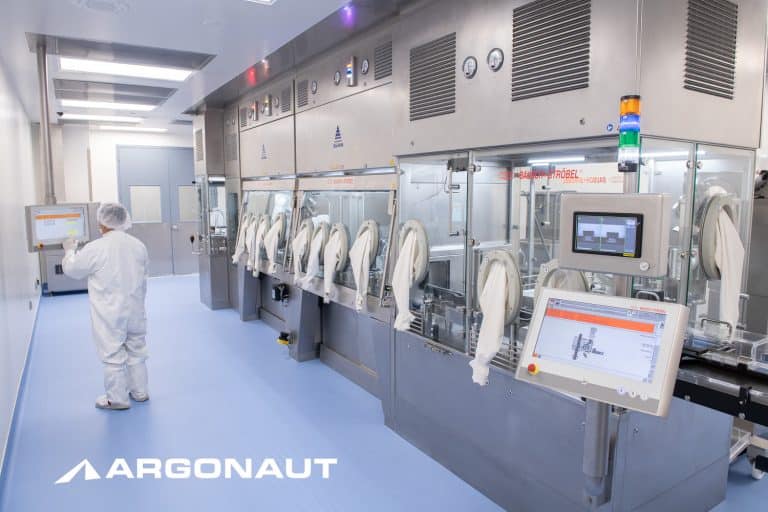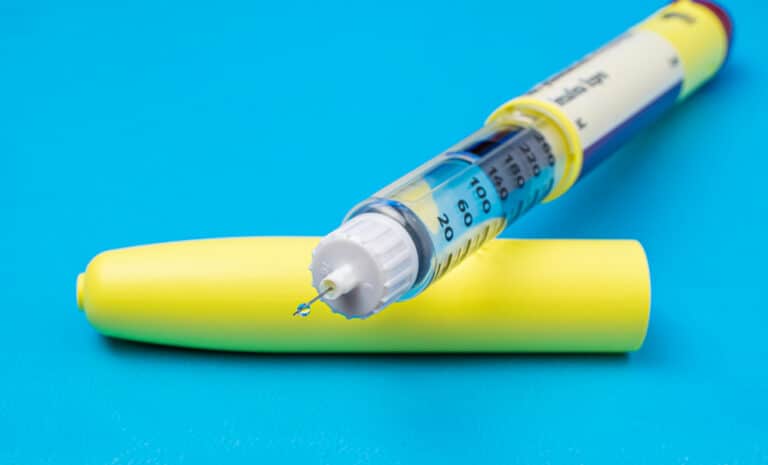Addressing novel modalities create the largest challenges in combination product manufacturing.
Challenges in combination product manufacturing must overcome what has traditionally been two different manufacturing disciplines.
At Argonaut Manufacturing Services, we have been fortunate to participate in several demanding projects, where we have successfully addressed numerous challenges in combination product manufacturing. While it might seem odd to refer to this as “fortunate,” we think combination products can seriously complement or enhance patient outcomes by improving treatment efficacy, and so does the market which is forecast to grow 7.2% from a 2022 base of $109.17 billion (1). For Argonaut, combination product manufacturing blends two of our core competencies (and business units), drug product manufacturing with device manufacturing.
Manufacturing of certain combination products such as auto-injectors, external pumps, and time dosage devices are relatively straightforward.
Main Challenges in Combination Product Manufacturing
1. Regulatory Environment
What are the challenges in combination product manufacturing? An obvious answer is the regulatory environment where compliance is required for both device and drug. However, in our opinion, this can be one of the easier obstacles to overcome.
2. Novel Modalities
Similarly to the above, combination products that started as two separate components and are now being combined to a single entity, co-packaged, or co-labeled are also relatively straight-forward. In our experience, where challenges in combination product manufacturing are truly emerging is when the therapeutic is being used with a new modality. “Smart capsules” or “ingestibles” (2) are a primary example. Therapeutic agent (which might be a drug, biologic, or combination of the two) is housed in an ingestible sensor, which allows targeted release and/or delivery to specific sites. The ingestible sensor has embedded electronic components and may also have a communication module, allowing it to transmit data to an external receiving device such as smartphone or tablet.
3. Material Compatibility
One of the primary challenges to overcome in combination product manufacturing for these types of innovative products is materials compatibility in the manufacturing process. The therapeutic must be compatible with the material where it is being contained, the material might be required to be capable of being sterilized, and in the case of some delivery systems the exterior needs to be both biocompatible and chemically resistant.
4. Ability to be Automated
Importantly, the material must be robust for handling in a manufacturing environment and ideally by robotics. As an example, material with low friction coefficient may be a good product development choice but could create a complication later in manufacturing where it would require air/suction devices for manipulation.
5. Cross Team Communication
Similar to the internal communication challenges in developing a combination product, manufacturing a combination product requires blending and communicating between two different disciplines: therapeutic and device. At Argonaut, both our therapeutic fill/finish group and the device group utilize a Quality Management System (QMS) that has the flexibility to manufacture devices, drugs, or combination products, and the QMS provides the bedrock of drug and device integration. However, we have also identified that highly cross-trained project managers, along with specialized regulatory support are needed to maintain compliance with regulations for both devices and drugs. Argonaut has combination product manufacturing teams that provide dedicated project management for our partners and facilitate technology transfer.
6. Few Uniform Standards
An additional challenge in combination product manufacturing is around manufacturability: how simple the combination product is to manufacture (e.g. injection molding), fill and finish, and QC. Many combination products are innovative and unique and as the technology is in an early stage, there are few uniform standards when it comes to manufacturing. As an example, vials come in standardized sizes- but combination products do not (yet). Automated fill/finish lines are fitted to standards for vials and syringes, but these lines are not necessarily transferrable for the new modes of innovative combination product therapeutic delivery. Further, after fill, the devices need to be sealed. Rather than automated capping of a vial, combination products could include multiple steps of handling, often combining intricate pieces to finish the device. Again, since this is not standardized, finishing may be a manual process.
As an alternative to injection molding, there are additive manufacturing approaches (e.g. 3D printing) (3) that hold great promise and while 3D printing has been used in numerous devices, the FDA recently approved the first printable drug to be ingested (4). However, according to the FDA, there is “a great deal of uncertainty on the testing and validation of the additive manufacturing process” (5) so it is unclear how this manufacturing approach might apply to combination products.
7. QC Testing
Finally, the combination product will be subject to quality control (QC) and testing. Unlike therapeutics, QC for a combination product may also involve testing electronics and software. This is an area familiar in the electronics industry that must be transferred into biotechnology for combination product manufacturing.
Overview
| Challenge | Detail |
| Regulatory environment | Complicated regulations, pathway dependent on PMOA |
| Novel modalities | Technology transfer between R&D and manufacturing |
| Material compatibility | Handling, robotic application |
| Ability to be automated | Custom tooling required, manual processes |
| Cross-team communication | Conformity between device and drug team |
| Few uniform standards | Fewer off-the-shelf manufacturing process options |
| QC testing | Non-traditional biopharma requirements |
Table 1: Challenges in combination product manufacturing
Starting with a strong manufacturing background in both therapeutics and devices has allowed Argonaut to manufacture difficult combination products.
Challenges in Combination Product Manufacturing of New and Innovative Devices
Manufacturing of certain combination products such as auto-injectors, external pumps, and time dosage devices are relatively straightforward. However, there are challenges in combination product manufacturing of innovative products at this point in the technology evolution cycle as they:
- are highly reliant on manual hand operations, particularly when the innovative combination product is in early clinical stages.
- require building of custom robotic/automated platforms.
- borrow and adapt solutions from other technology spheres (e.g. microelectronics).
This obviously drives the economics of manufacturing. While costs can be expected to be driven down as production ramps up, this is, nonetheless, a hurdle in starting combination product manufacturing for innovative combination products.
Summary
In summary, besides the regulatory hurdle, challenges in combination product manufacturing must overcome what has traditionally been two different manufacturing disciplines. The choice of materials is critical to manufacturability. Early-stage combination product manufacturing is often labor intensive and ramp-up requires custom automation/robotics. QC requires the additional capabilities found in the electronics and software industry. Starting with a strong manufacturing background in both therapeutics and devices has allowed Argonaut to manufacture difficult combination products.
If you want to learn more about Argonaut combination product manufacturing, contact us.



